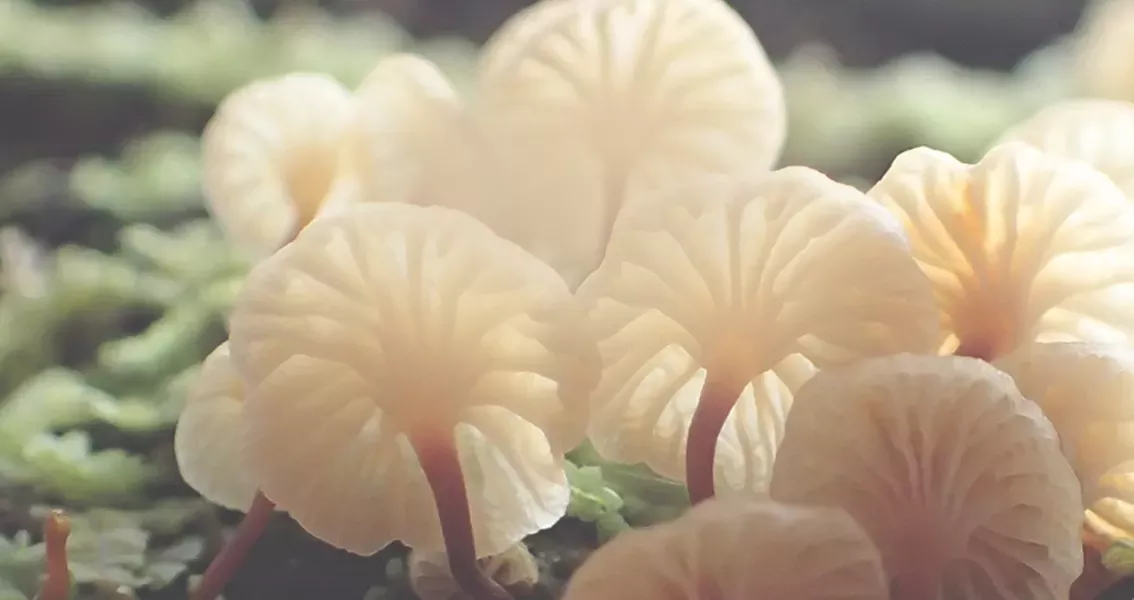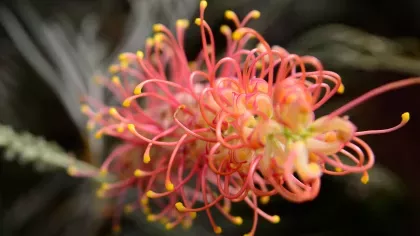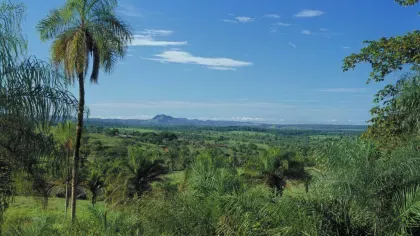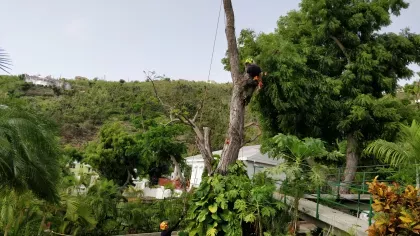7 October 2022
Milestone: 100 new Important Plant Areas identified in Tropical Africa
Kew Science staff and partners have now identified over 100 sites from two highly biodiverse countries, Cameroon and Mozambique, as part of the Tropical Important Plant Areas (TIPAs) programme.

A major step forward in the effort to map the Important Plant Areas (IPAs) of tropical Africa has been reached. Over 100 sites from two highly biodiverse countries, Cameroon and Mozambique, have been published as part of the Tropical Important Plant Areas (TIPAs) programme on Kew’s TIPA Explorer portal.
These data are a much-needed resource for aiding conservation of the rich and threatened plant-life in these countries and are the result of research by Kew Science staff and the many contributors from our partner organisations in Cameroon and Mozambique.
Urgent action needed to conserve plants
However, conservation efforts are globally biased towards animals, and plants are frequently overlooked. Without consideration for plants in conservation planning, we risk losing unique and valuable plant species and the important ecosystem services they provide.
There is no “one size fits all” solution to conservation and, in many cases, there is a mismatch between the best sites for conserving plant diversity and the best sites for conserving animal diversity.
Important Plant Areas (IPAs) were developed to address the under-representation of plant species in conservation efforts. IPAs are the most important places in the world for wild plant and fungal diversity that can be managed as specific sites.
IPAs are selected through criteria relating to individual threatened species, exceptional botanical richness, socio-economic species, and the presence of rare or threatened habitats. While IPAs themselves are not legal designations, they have great value in guiding governments and NGOs in where conservation action is required.
The TIPAs programme was launched at Kew to address an additional bias: a lack of IPAs in the Tropics. Despite encompassing some of the most biodiverse regions for plants globally, a relative lack of data and resources meant that few IPAs had been identified across tropical regions.
To address this imbalance, Kew’s TIPAs programme set out to identify IPAs in the Tropics of Africa, Asia, and the Americas.
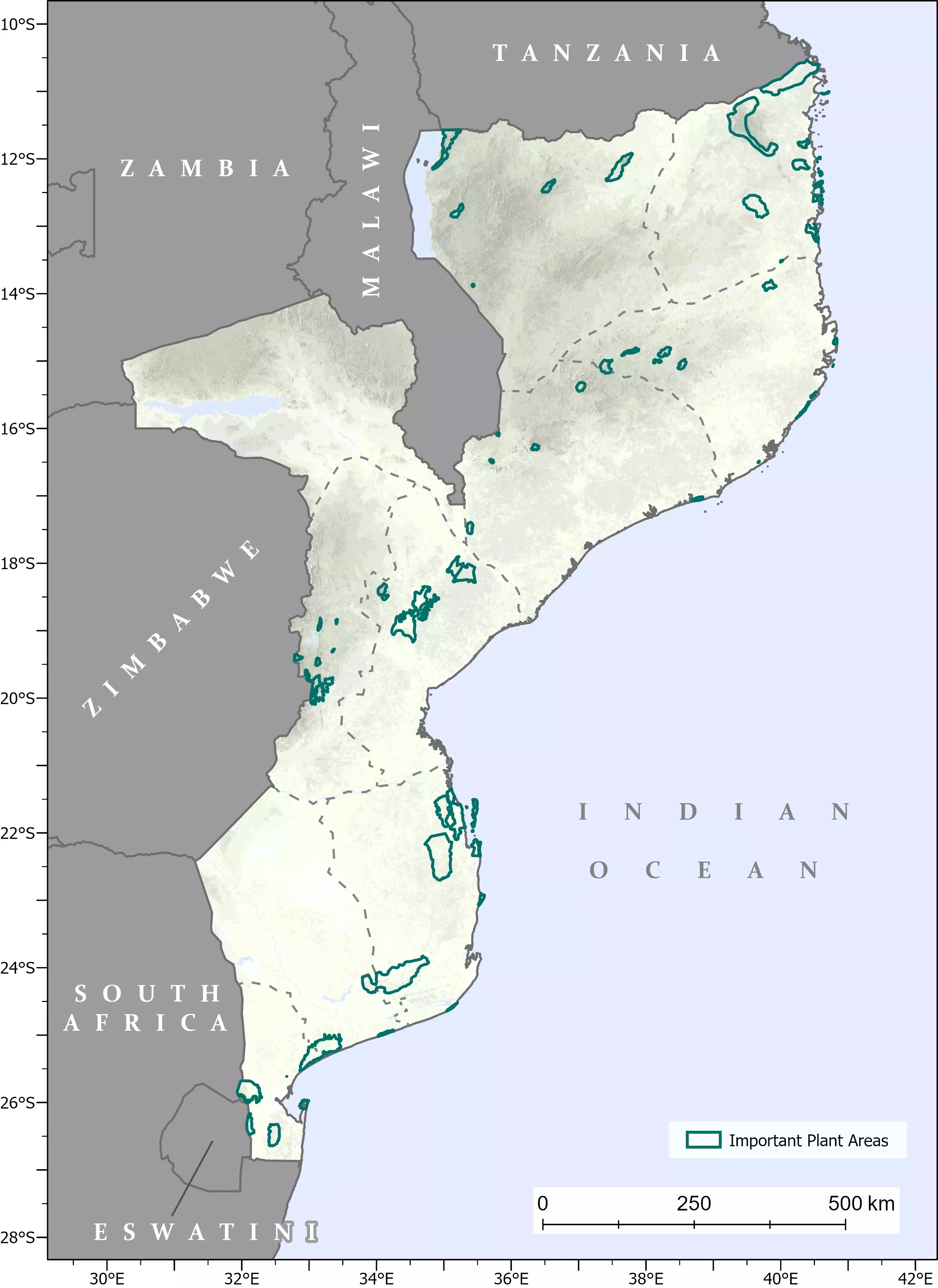

Over several years, Kew has worked with partner institutions in both Mozambique (principally Instituto de Investigação Agrária de Moçambique and Eduardo Mondlane University) and Cameroon (principally the IRAD-National Herbarium and University of Yaoundé I) to identify IPAs in each country, while producing hundreds of IUCN (International Union for Conservation of Nature) Red List assessments quantifying extinction risk for individual plant species.
Cameroon and Mozambique: two biodiverse and threatened floras
Cameroon and Mozambique contain a wealth of plant diversity.
The flora of Cameroon exceeds 8,000 species, and its varied habitats give rise to the term “Africa in miniature”. Cameroon’s lush rainforests and high mountains in particular produce some of the most species-rich regions in tropical Africa. However, its habitats are under intense pressure.
Ten percent of Cameroon’s plant species are threatened, and it has the highest number of globally threatened tree species in mainland Africa. The annual rate of deforestation in 2013-2019 was double that in the 2006-2012 period.
Logging, mining, and palm oil cultivation are notable threats but small-scale agriculture is probably the major driver of forest loss.

Mozambique is also a hugely biodiverse nation. The country hosts a range of habitat types from dry coastal thickets to moist montane forests, intertidal seagrass meadows to succulent-rich inselbergs.
Alongside this range of habitats are over 270 endemic (unique to Mozambique) and around 400 near-endemic plant species. Around 60% of these endemic and near-endemic species are threatened with extinction. Conversion of habitats to agriculture poses a particular risk to many plant species as most Mozambicans depend on farming for their livelihoods.
Loss of plant diversity will also result in the loss of important ecosystem services that these plants provide and that contribute significantly to people’s health and wellbeing. Soil fertility preservation and provision of resources such as clean water, food, and medicines are just some of the many important ecosystem services provided by Mozambique's flora.
Progress on IPA designation in Cameroon and Mozambique
The 49 Cameroon IPAs released so far incorporate approximately 80% of Cameroon’s threatened species in approximately 5% of the land area. Sites range from large areas with over 100 threatened species to tiny sites hosting a few key endemics.
Amongst the large areas are the glorious Korup (banner image above), Bakossi and Campo Ma’an National Parks as well as unprotected and highly threatened sites such as the sacred Mount Kupe and the less known Ngovayang massif.
A few further major sites remain to be added to the IPA network. If further surveying can confirm continued presence of historically recorded species, there is also potential for many additional smaller sites to be gradually incorporated. In Mozambique, the process of identifying IPAs is now complete. 57 IPAs have been identified nationally, covering fewer than 3% of the country’s terrestrial land area but encompassing important populations of over 80% of Mozambique’s threatened plant species and nearly two-thirds of endemic and near-endemic plants.
Sites include the highest mountain in Mozambique within the Chimanimani Mountains IPA, the only limestone forest nationally in the Cheringoma Gorges IPA and five IPAs containing forests of the Endangered tree species Icuria dunensis- a species, and genus, known only from Mozambique globally.

Conservation action
Having proposed over 100 sites so far, the focus of the TIPAs project in these countries will move towards trying to conserve and sustainably manage the sites and their plants.
This work is already underway in both Mozambique and Cameroon, following the lead of the Guinea TIPAs project where the government of Guinea has committed to incorporating all of the 22 IPAs into the country's protected area network. Kew and its partners are now working to develop management plans for specific IPAs in Guinea.
In Mozambique, Kew is working with the Instituto de Investigação Agrária de Moçambique to collect seeds of threatened, endemic and socio-economically important plant species within IPAs for storage at the Millenium Seed Bank. This will provide an insurance policy against their extinction. Partners are also working in situ to conserve the threatened and unique Icuria dry forests within designated IPAs.
Meanwhile in Cameroon, Kew’s partners are building relationships with local communities at sites such as Bali Ngemba in the largely deforested Bamenda Highlands, and around the highly biodiverse Ebo Forest.
Initiatives such as funding local communities to rear and plant native tree species in deforested areas aim to promote conservation while addressing the need for alternative sources of income to forest clearance.
Exceeding 100 IPAs is a huge step forward in identifying the highest priority sites for plant conservation in Tropical Africa. However, for some sites, such as the Ebo Forest in Cameroon, we are only beginning to document the plant diversity they host.
Completing this work and using it to safeguard these sites before they are lost remains a huge challenge. The designation of sites like Ebo as IPAs will strengthen the case for further research and help to conserve the plant diversity of Mozambique and Cameroon for future generations.

Acknowledgements
The Mozambique TIPAs project would like to thank our funders the Oppenheimer Generations Foundation, and Stephen and Margaret Lansdown.
The Cameroon TIPAs project would like to thank our funders the Players of the People’s Postcode Lottery (PPL) and the Franklinia Foundation.
Useful Links
Additional Authors
Jean Michel Onana, the University of Yaoundé I and National Herbarium of Cameroon
Eduardo Toledo, Kew Science

